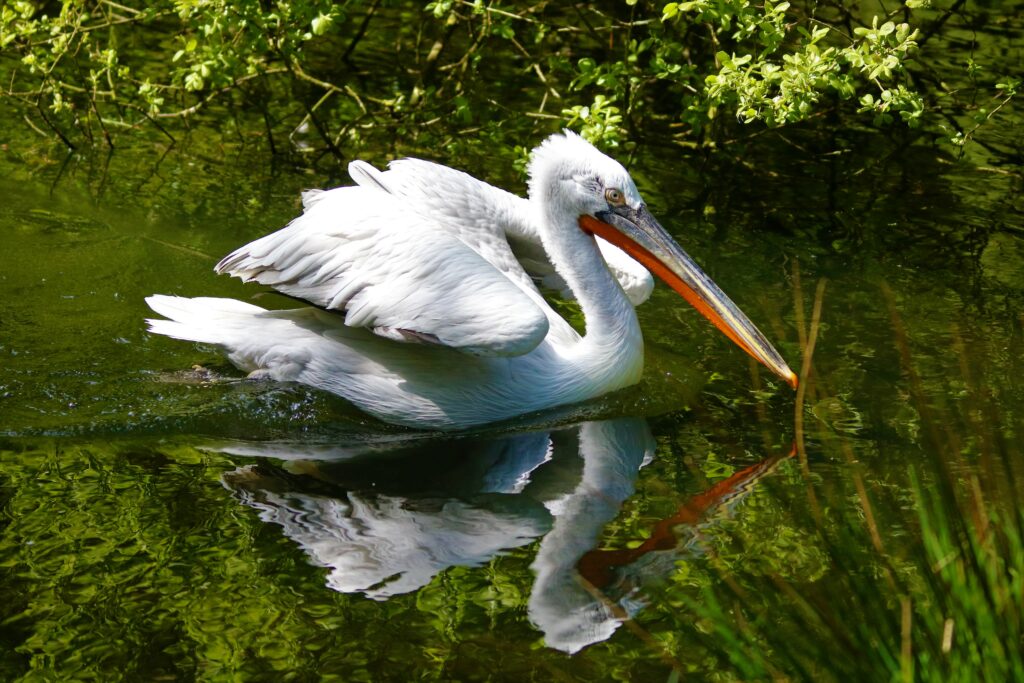
dalmatian pelican
Class: Birds
Order: Pelecaniformes
Family: Pelecanidae
Genus: Pelecanus
Species: Crispus
Geographic distribution: Southern Eurasia
Habitat: Coasts, lakes, and deltas
Size / Wingspan: 180 cm long / 310 to 345 cm
Longevity: 30 years
Weight: 10 to 13 kg
Sexual Maturity: 3-4 years
Incubation: 30-32 days
Clutch: 2 eggs
Diet:Piscivorous
Protection Status: IUCN Status CR – Near Threatened
Description
The Dalmatian pelican, the largest of the pelicans, has a fishing technique perfectly adapted to its beak: with its water-permeable pouch, it captures fish like in a net. In groups, several pelicans gather in shallow water, encircle a school offish, and drive it toward the shore. All the beaks open at once, and the fish are caught in the gular pouch. The water is the nexpelled, and the fish is swallowed headfirst. Once they are full,the pelicans return to feed their young left at the nest.
Threats and preservation
The Dalmatian pelican saw its population decline in the 20thcentury, reduced to about a thousand pairs. Thanks to conservation efforts, it has increased to 10,000-14,000 individuals, but it remains threatened by fishermen, wetland drainage, depletion of fish stocks, pollution, and habitat destruction. Conservation programs, such as those led by the Noé Association and the Tour du Valat, include the creation of artificial nesting islands to protect colonies. Despite these efforts, populations continue to decline, and actions must continue.